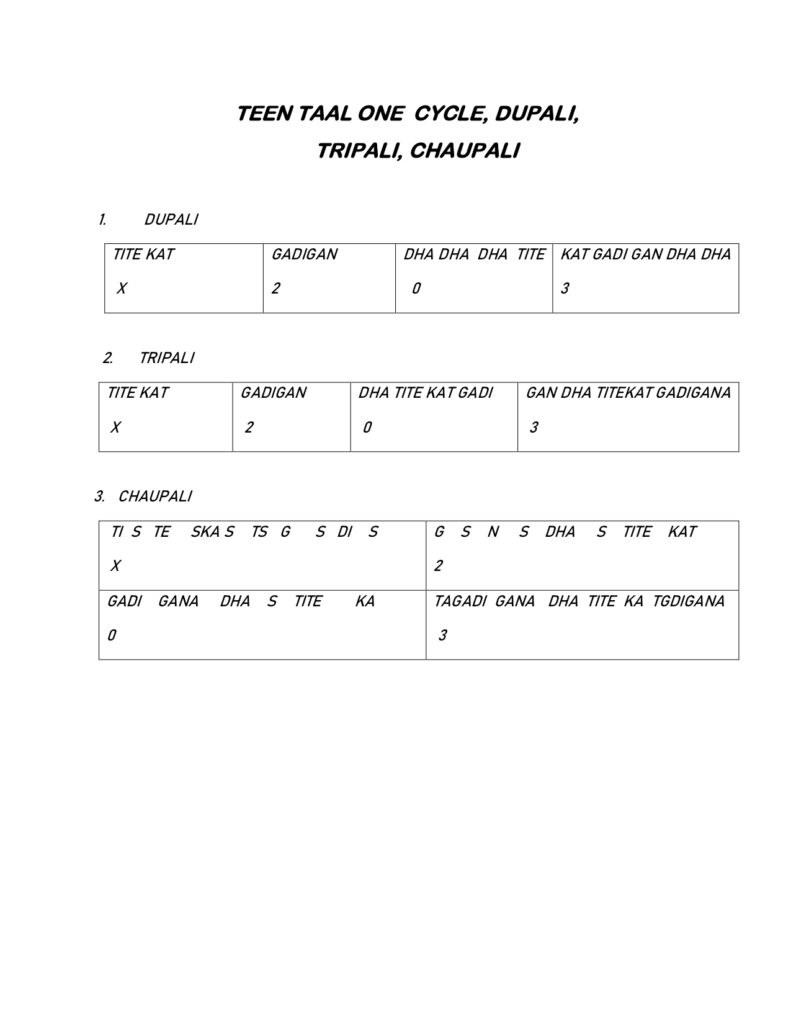TEEN TAAL ONE CYCLE, DUPALI, TRIPALI, CHAUPALI, Teen Taal” is a foundational 16-beat rhythmic cycle (or taal) widely used in North Indian classical music, structured into four sections (or vibhags) of four beats each. It is characterized by claps (taali) on beats 1, 5, and 13, with a silent beat (khaali) on the 9th beat.
- Dugun (Dupali): Playing each beat twice within the 16-beat cycle, creating a faster-paced rhythm.
- Tigun (Tripali): Playing each beat three times within the same cycle, accelerating the tempo further.
- Chaugun (Chaupali): Playing each beat four times, resulting in a rapid, complex rhythmic structure within the cycle.
These variations add texture and dynamism to performances in Teen Taal.


https://www.facebook.com/sbsinghtablaguru
https://www.youtube.com/@BhagawanSingh
Teen Taal is a classic and highly versatile 16-beat rhythmic cycle (taal) fundamental in North Indian classical music. The taal’s 16 beats, divided into four equal segments (vibhags), are played as Dha Dhin Dhin Dha | Dha Dhin Dhin Dha | Ta Tin Tin Ta | Ta Dhin Dhin Dha. It features:
- Taali (Clap): Accents on the 1st, 5th, and 13th beats.
- Khaali (Empty Beat): An open or empty beat on the 9th beat, signaling a change in the cycle’s feel.
Variations:
- Ekgun (Single speed): Each beat is played once per cycle, maintaining a steady rhythm.
- Dugun (Dupali): Every beat is doubled, creating a 32-beat structure within the 16 beats, giving a faster, intricate pattern.
- Tigun (Tripali): Each beat is repeated thrice, transforming Teen Taal into a 48-beat cycle within the same framework.
- Chaugun (Chaupali): Each beat is played four times, creating an intense and rapid 64-beat composition within one cycle.
These layakari (tempo-based) variations bring depth to compositions, allowing artists to showcase their skills by altering the tempo and complexity while maintaining the taal’s underlying structure.

